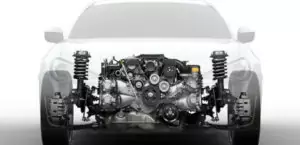The 1.2-liter Toyota 3NR-FE engine has been assembled since 2011 in Japan for B-class models. The unit comes in two versions: with and without the Dual VVT-i variable valve timing system. A simplified modification of the motor without a phase regulator is offered only in the Indian market.
The NR family includes engines: 3NR‑FE, 8NR‑FTS, 1NR‑FE, 1NR‑VE, 1NR‑FKE, 2NR‑FE, 2NR‑VE, 2NR‑FKE.
The engine was installed on:
- Toyota Etios NGK12 since 2011;
- Toyota Etios Cross NGK15 since 2014;
- Toyota Yaris XP130 since 2011; Yaris XP150 since 2013;
- Daihatsu Ayla since 2013;
- Daihatsu Sigra since 2016.
Specifications
| Production years | since 2011 |
| Displacement, cc | 1197 |
| Fuel system | injector MPI |
| Power output, hp | 80 (without Dual VVT-i) 86 (with Dual VVT-i) |
| Torque output, Nm | 104 (without Dual VVT-i) 108 (with Dual VVT-i) |
| Cylinder block | aluminum R4 |
| Block head | aluminum 16v |
| Cylinder bore, mm | 72.5 |
| Piston stroke, mm | 72.5 |
| Compression ratio | 10.5 (without Dual VVT-i) 11.5 (with Dual VVT-i) |
| Features | ETCS-i |
| Hydraulic lifters | yes |
| Timing drive | chain |
| Phase regulator | no Dual VVT-i |
| Turbocharging | no |
| Recommended engine oil | 5W-30 |
| Engine oil capacity, liter | 3.4 |
| Fuel type | petrol |
| Euro standards | EURO 3/4 (without Dual VVT-i) EURO 4/5 (with Dual VVT-i) |
| Fuel consumption, L/100 km (for Toyota Yaris 2014) — city — highway — combined |
5.9 4.1 4.7 |
| Engine lifespan, km | ~200 000 |
| Weight, kg | 95 |
Disadvantages of the 3NR-FE engine
- Some owners complain about a small oil burner from the first kilometers;
- Noises and knocks are constantly heard from under the hood, especially from the VVT-i clutches;
- The water pump and individual ignition coils have a short life;
- The power unit is prone to rapid carbon deposits, thanks to the EGR valve.






